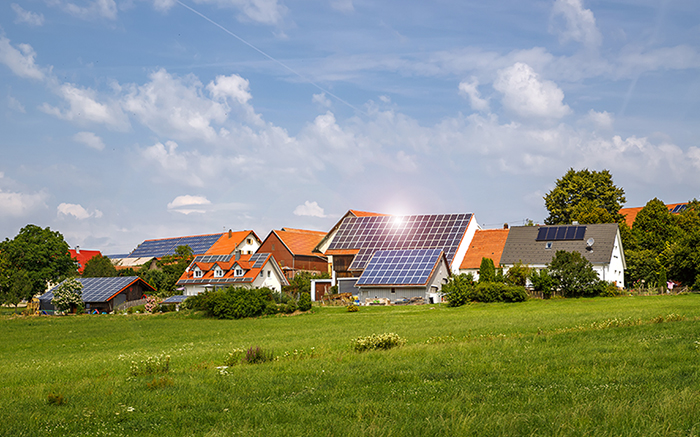With the rapid development of science and technology, photovoltaic power generation technology has been widely used both at home and abroad, in a variety of forms and in a wide range of places, primarily for large-scale ground-based photovoltaic power plants, residential and commercial buildings, roofs, photovoltaic building integration, photovoltaic street lamps and so on. Buildings, shadow, chimneys, dust, clouds, and other objects will eventually obstruct the solar modules in certain locations. As a result, many are concerned about how much such events impair the power generation efficiency of solar cells and how to address them.

In practice, solar cells are typically made up of numerous modules connected in series or parallel to produce the desired voltage or current. To attain high photovoltaic conversion efficiency, each cell in the module must share similar features. During use, one or more cells may become mismatched, for example, due to cracks, internal connection failures, or shading, resulting in a dissonance between their characteristics and the whole.
Under some conditions, a shaded solar cell module in a series branch circuit will act as a load, consuming the energy generated by other sun cell modules with light. The shaded solar cell module will heat up during this time, resulting in the hot spot effect. This impact can cause catastrophic damage to the solar cell. Shaded cells can consume some of the energy produced by light solar cells. To prevent the solar cell from being harmed by the hot spot effect, connect a bypass diode in parallel between the positive and negative terminals of the solar cell module. This prevents the energy created by the light-illuminated module from being consumed by the shading module.
About the causes of the hot spot, the source of the issue cells, and the accompanying countermeasures.

A PV module's fundamental component is the solar cell. In general, the electrical characteristics of the solar cells used in each module should be similar; otherwise, the so-called hot spot effect would occur on cells with poor electrical performance or that are shadowed (problem cells).
To avoid hot spots, each cell should be connected in parallel with a bypass diode; if the battery fails or the cells are shaded, the bypass diode will bypass the problem cells.
It is not practicable to link a diode in parallel with each cell. Typically, an assembly contains 18 (36 or 54 cells in series) or 24 (72 cells in series) cells in series with a diode in parallel.
It is possible that if the current produced in these 18 or 24 cells is inconsistent, i.e., when a problem cell is present, the current across the string will induce hot spots on the problematic cell. If the current varies from string to string, a step curve or anomalous curve will appear on the module's characteristic curve with the bypass diode connected.
If the performance of the solar cells within the module is inconsistent, hot spots will surely occur. The hot spot phenomena can be detected using the module's output characteristic curve and infrared imaging.
If the irregularity of solar cell performance in the module is caused by a loss in efficiency following solar cell light attenuation, we may detect the presence of a hot spot problem using the module's output characteristic curve and infrared imaging. We may compare the module's output characteristic curve before and after attenuation, as well as use infrared imaging to see how it changes before and after illumination.
If the module is not connected to the bypass diode, even if there is a problem cell exists, the output characteristic curve of the module can not see the step curve, but the short-circuit current should be smaller than the normal module, which indicates that the hot spot phenomenon exists.







